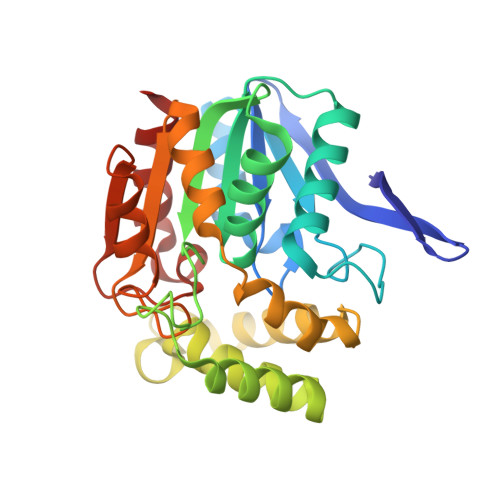The Crystal Structure of a (-)Gamma-Lactamase from an Aureobacterium Species Reveals a Tetrahedral Intermediate in the Active Site
Line, K., Isupov, M.N., Littlechild, J.A.(2004) J Mol Biology 338: 519
- PubMed: 15081810
- DOI: https://doi.org/10.1016/j.jmb.2004.03.001
- Primary Citation of Related Structures:
1HKH, 1HL7 - PubMed Abstract:
The structure of the recombinant (-) gamma-lactamase from an Aureobacterium species has been solved at 1.73A resolution in the cubic space group F23 with unit cell parameters a=b=c=240.6A. The trimeric enzyme has an alpha/beta hydrolase fold and closely resembles the cofactor free haloperoxidases. The structure has been solved in complex with a covalently bound ligand originating from the host cell and also in the unligated form. The associated density in the former structure has been interpreted as the two-ring ligand (3aR,7aS)-3a,4,7,7a-tetrahydro-benzo [1,3] dioxol-2-one which forms a tetrahedral complex with OG of the catalytic Ser98. Soaks of these crystals with the industrial substrate gamma-lactam or its structural analogue, norcamphor, result in the displacement of the ligand from the enzyme active site, thereby allowing determination of the unligated structure. The presence of the ligand in the active site protects the enzyme from serine hydrolase inhibitors. Cyclic ethylene carbonate, the first ring of the ligand, was shown to be a substrate of the enzyme.
- Exeter Biocatalysis Centre, School of Biological and Chemical Sciences, University of Exeter, Stocker Road, Exeter EX4 4QD, UK.
Organizational Affiliation:

















